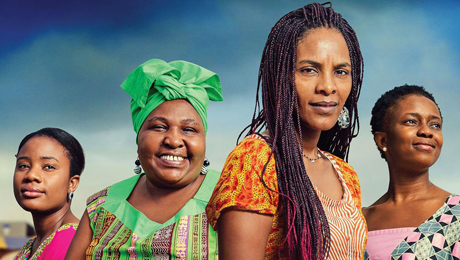The Breath of Fresh Air Film Festival screens in Launceston from November 10 through to November 13. The festival will screen some 22 features, 20 documentaries and short films. There are also workshops, panel discussions and Q&As with filmmakers like Clayton Jacobsen.

LAST UPDATED OCTOBER 16, 2016
GIRL ASLEEP.

Girl Asleep was created as a stage play for Adelaide’s Windmill Theatre by actor turned writer Matthew Whittet (The Great Gatsby, etc) and director Rosemary Myers, and was the third part of a coming of age trilogy. The pair have brought the play to the screen, which allowed them to expand on their vision and broaden it out considerably. Whittet’s screenplay gives some insights into the troubled mind of an adolescent girl. The film is steeped in the aesthetic of the 70s with colourful clothing, vibrant colours, Jonathon Oxlade’s inventive production design and Andrew Commis’ cinematography. Having worked with the stage play from its inception Myers has a deep understanding of the material and the idiosyncratic characters. A veteran of the world of theatre, she demonstrates a strong understanding of the visual language of the cinema with her film debut. She employs a vivid visual style, even cleverly using intertitles placed on objects like a basketball or food stuff to set the scene.
Myers draws solid performances from her cast, several of whom had appeared in the stage play. Whitmore is perfectly cast as the timid misfit Greta, and she uses facial tics and expressions to show her uneasiness and frustrations. Her performance anchors the film.


Davies brings a harsh and gritty realism to the material, which shares some of his familiar themes and motifs – repression, longing, and a woman caught up in rapidly changing times. The film also has a surprisingly strong feminist slant to it. The series of tragedies that befall this hard working farming family will remind many of the Oscar winning classic How Green Was My Valley. It would be a hard heart indeed that fails to be moved by the film’s final few minutes that delivers a potent anti-war message – haunting music plays as the camera travels through grey, muddy battlefields, and then a lone piper plays.
Newcomer Deyn has a natural screen presence, and gives a soulful performance as the strong willed heroine, giving her a slightly contemporary feel. The role of the brutal patriarch is familiar territory for Mullan, but with an excellent and powerful performance he manages to bring some subtle nuances to the character and make him a more sympathetic and three dimensional character.
The film has been gorgeously shot by cinematographer Michael McDonough, who brings an almost poetic sensibility to the material. McDonough uses the widescreen effectively for some sweeping exterior shots that will remind audiences of Terrence Malick’s visually stunning Days Of Heaven, while the interiors have been shot using natural lighting that enhances their claustrophobic and oppressive nature. And Davies is a classical filmmaker who uses long steady takes rather than the kinetic style of fast editing and hand held cameras.

Life, Animated explores Owen’s life in compassionate and sympathetic fashion. Director Roger Ross Williams (tv series Undercover Boss, etc) has been granted extraordinary access to Owen as he follows him around as he goes about his life. This intimate portrait gives us insights into Owen’s world and the challenges he faces. Life, Animated is a blend of home movie footage, animation, intimate and personal interviews and brief snippets from Disney movies. And there is some animation created by Mathieu Betard, Olivier Lescot and Philippe Sonnier that illustrates Owen’s journey.
The documentary has been inspired by Ron Suskind’s own book Life, Animated: A Story Of Sidekicks, Heroes and Autism. There are some emotionally moving and heartwarming moments throughout as the film explores parental love and the sense of determination displayed by Owen. But the film is not all upbeat and positive as there are a few darker moments throughout. And there is a feeling that Life, Animated is also a tad manipulative at times.

Veteran theatre director Ros Horin approached a number of refugee women, interviewing them about their experiences, with the idea of telling their stories through a theatrical piece. Empathetic and sympathetic, Horin worked with four women who had no professional acting experience and workshopped her ideas. Working with counsellors and community advocate groups, Horin did her best to protect the women throughout. Horin also decided fairly early on to film the lengthy process of workshops, training, rehearsals and ultimate performance, so we get this document of the evolution of the show. This film gives us a behind-the-scenes look at the creative process.
Horin hopes that The Baulkham Hills African Ladies Troupe will also be a powerful tool to help change entrenched attitudes towards the plight of refugees and to broaden our understanding of their experiences.



